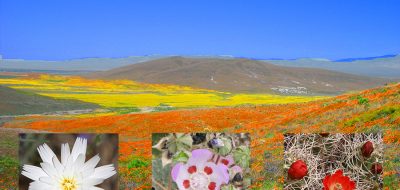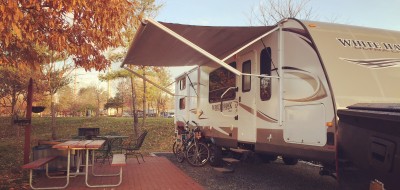One of the blessings of RVing is the ability to pursue our passions. By traveling to events and destinations related to a particular hobby or interest we expand our knowledge in a hands-on, experiential way. To help your experiences be as pleasurable as possible, below are some continued tips related to destinations and sightseeing.
- Check road maps for upcoming rest areas or picnic areas and welcome centers. (You may not think you want information at a welcome center as you approach it, but experience tells me that every time I pass one by, I later wish I had stopped either for a map of that state or for general information that would help me identify what I was seeing.)
- Pay close attention to the directions to your campground and orient yourself using a map. You may need to know later how to go into town and back.
- When you’re heading for higher elevations, watch out for altitude sickness. Allow extra time to acclimate yourself to the thinner air. It’s a good idea to stay at 5,000 feet for a day or two before going higher. At 5,000 feet, it’s normal to notice a faster heartbeat and increased breathing rate due to lower oxygen levels. For the first two or three days, some people may experience dizziness, fatigue, headaches, nasal congestion, and difficulty sleeping. If the altitude starts to bother you, take deep breaths; avoid overexertion; eat high-carbohydrate foods; go easy on alcohol, caffeine, and salty foods; and drink more water than usual.
- You’ll take more pictures if your camera is handy. Keep it beside the passenger seat and have a purse or fanny pack that’s big enough to hold it.
- If you’d like to travel to a remote location such as Alaska but are not sure you can handle it on your own, consider an RV caravan. Touring by caravan has a lot of advantages. The sponsoring group plans the itinerary and makes advance reservations for campgrounds and group activities such as meals, ferries, sightseeing, and shows.
Enjoy your RVing!
Bernice





Doreen Orion aka Queen of the Road
For Alaska, would highly recommend doing the Marine Highway (ie put your rig on a ferry, make several stops to the tiny towns in the Southeast along the way). That was the best part of our trip to America’s Last Frontier.
In general, we also found it’s best to ask locals for their recommendations on out of the way restaurants and off the beaten path things to do. That’s how we managed such zany fun on our trip.
RV LAD
I WOULD LOVE TO TRAVEL TO ALASKA WITH A GROUP OR CARAVAN, BUT CANNOT AFFORD THE EXPENSIVE FEES. I’M SORT OF A FREE-LANCER AND DON’T NEED A FORMAL ITENIARY. I WOULD JUST LIKE TO TAG ALONG WITH SOMEONE OF SIMILIAR INTEREST. ANY ADVICE? I AM A MEMBER OF FMCA AND SMART (RETIRED MILITARY), BUT FOUND NO INTEREST.
Dennis Anderson
I’m a map junkie. Besides a GPS system, satellite version of Streets and Trips, and the ubiquitous WalMart Atlas, I usually have paper state road maps to help plan our trips.
We don’t use these paper maps when actually travelling, but they do have their use. Many times I’ll notice a possible point of interest on a paper map that’s just a few miles off our planned route that doesn’t show on the automated route planners. Online access allows us to get further details about these interesting spots and decide whether it’s worthwhile to stop.
Travelling with a bunch of grandkids (ages 3 – 18) is much easier when we can communicate to them where we are going and what we’ll see. Of course, it helps to find things that will interest them. Fortunately the grandkids and I share enough common interests, so I can usually tell if they’ll find an activity interesting.